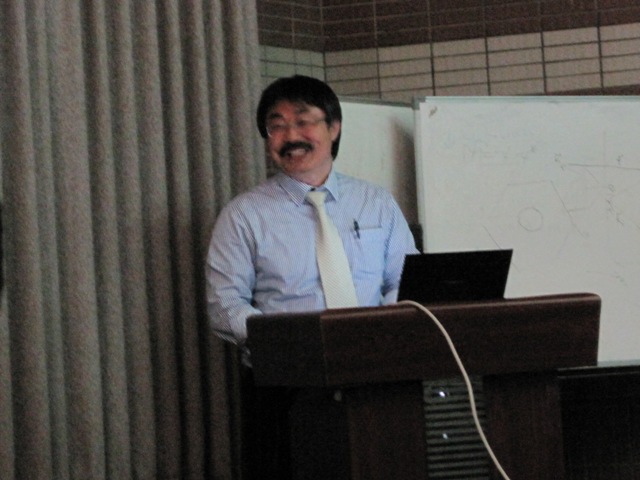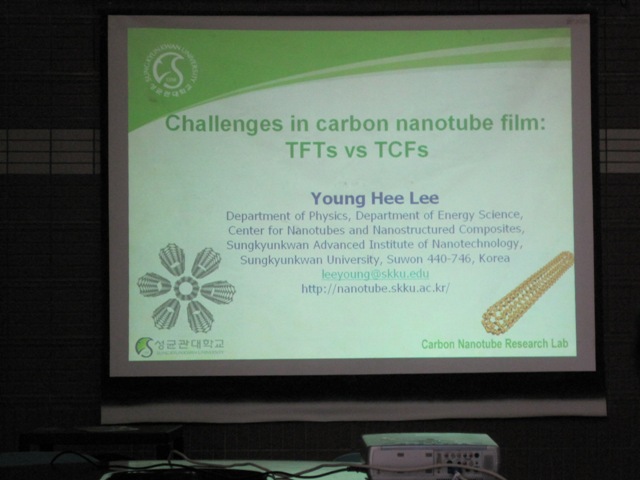光电化学系列讲座(二十二) 2010-5-7


报告人:Prof. Young Hee Lee
Department of Physics, Center for Nanotubes and Nanostructured Composites, Sungkyunkwan Advanced Institute of nanotechnology, Sungkyunkwan University, Korea
Prof. Lee has been a full professor of the Physics Department since 2001. He got his Ph. D. from Kent State University in Ohio in 1986, all in physics. Prior to joining SKKU in 2001, Prof. Lee was a full professor in the Physics Department at Chonbuk National University since 1986. His experience in research includes: visiting scientist at Ames Laboratory, Iowa State University (1989-1990); visiting scientist at IBM, Zurich, Switzerland (1993); visiting professor at Michigan State University (1996-1997). Currently, he is the head of Department of Energy Science. He serves for managing editor of ‘NANO’ journal. He is leading several national research projects in CNT-FET transistors, CNT transparent conducting film, CNT-liquid crystal devices, field emission displays, and industry projects in metal composites, energy storage of battery, supercapacitor, hydrogen storage, solar cell, thermoelectric cell and fuel cells. Prof. Lee’s work has focused on understanding the fundamental properties of carbon nanoubes and nanostructures, synthesis of carbon nanotubes using arc discharge and chemical vapor deposition methods, purification, dispersion, functionalization and separation and applications of carbon nanotubes to various devices such field emission displays, transistors, electron source guns, flexible transparent conducting flms, supercapacitors, secondary battery, gas sensors, hydrogen storage, and composites for EMI shielding. He has published more than > 300 scientific papers in international journals and > 100 patents on carbon nanotubes. His total SCI citation number reaches over 10,000 times and his H-index is 44.
报告题目:Challenges in carbon nanotubes : TFTs & TCFs
内容提要:
The electronic structures of carbon nanotubes are governed strongly on the diameter and chirality. Since the nanotubes are exposed to the surface, electronic structures are expected to be severely modified by environment such as solvent and adsorbates. Yet, the effect of solvent and adsorbates to the electronic structures of carbon nanotubes has been rarely investigated. In general, a charge transfer between adsorbates and carbon nanotubes occurs, therefore modifying the electronic structures of carbon nanotubes. By precisely understanding the charge transfer mechanism, one may engineer carbon nanotubes to be suitable for many applications in electronic devices such as transistors and transparent conducting films. We will discuss a method of precisely engineering p- and n-type doping. In addition, an effort of utilizing ambipolarity directly without intentional doping will be further discussed.
